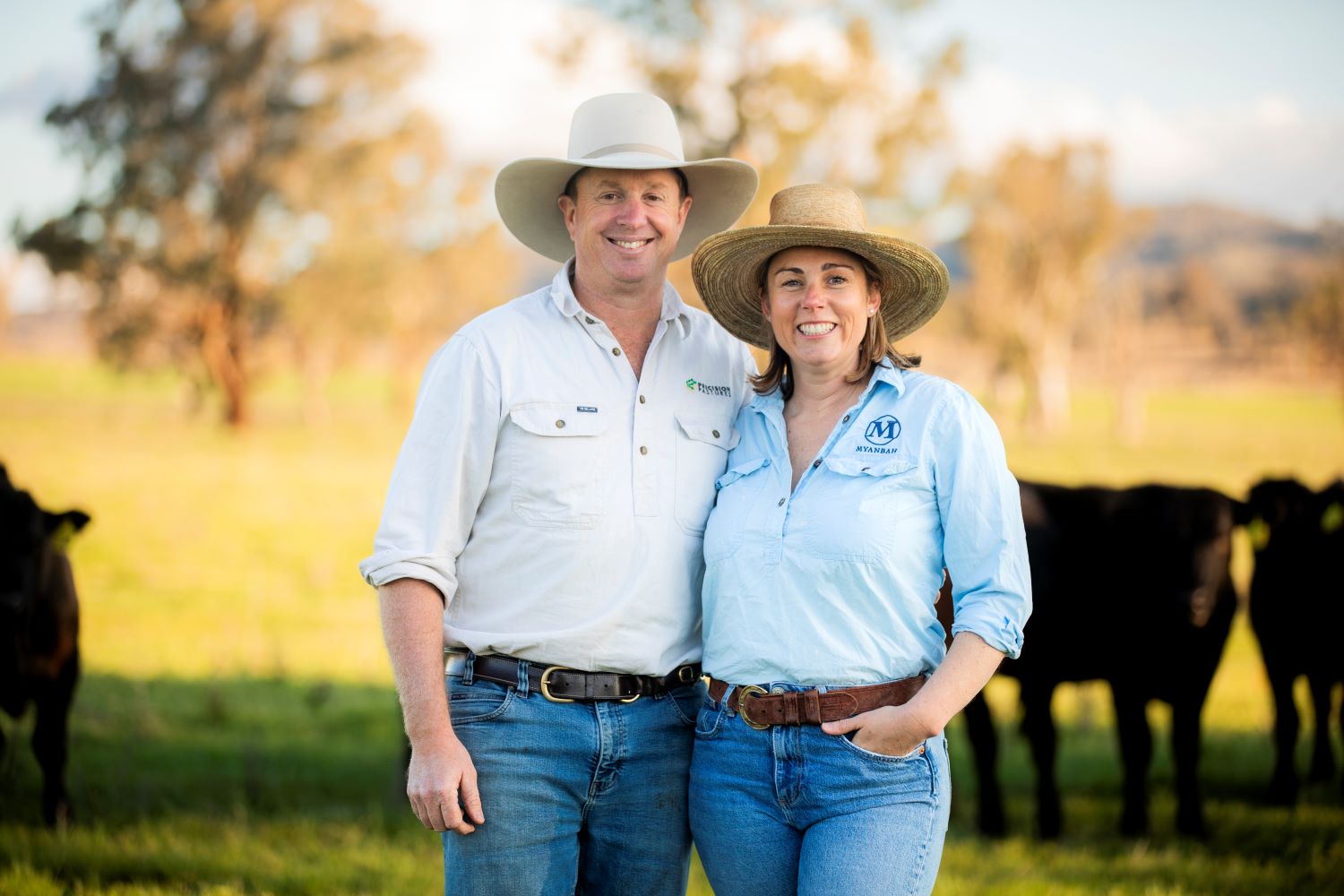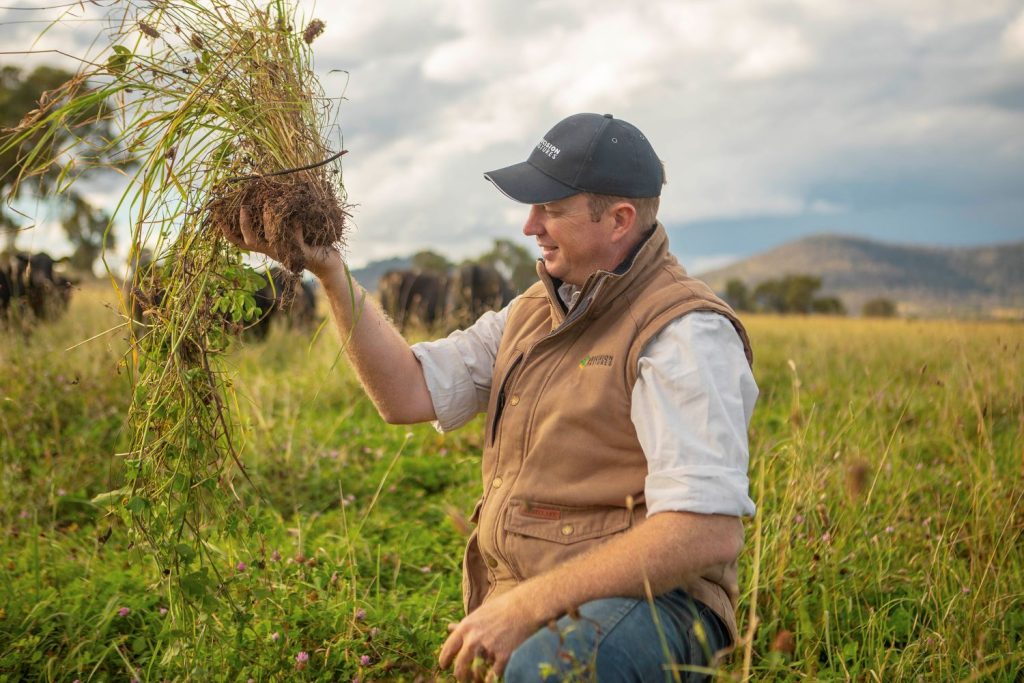Let her rip: new research shows carbon payoff from deep ripping or ploughing

Deep ripping, long valued for enhancing the productivity of grazing enterprises, has now been
linked with lifting soil carbon levels and generating Australian Carbon Credit Units (ACCU)s.
Analysis of soil organic carbon (SOC) levels at properties working with Precision Pastures across
Queensland has shown land improved by blade and offset ploughing or cutter bars consistently
recorded higher SOC levels after three-to-five years.
Speaking ahead of the 2025 National Carbon Farming Conference and Expo next week, New England cattle producer and Precision Pastures Director and Chief Executive Officer, Hamish Webb, said the findings provided evidence of the positive impact of extending root depth, and subsequently pasture biomass, to benefit livestock production.
“Many producers have demonstrated how opening up the soil and allowing greater penetration of root systems has led to better plant growth,” Mr Webb said.
“What’s exciting is we’re now consistently seeing a marked rise in soil carbon within three to five years after ripping.”
Results from several clients show that while SOC levels may initially decrease through oxidation, they level out then climb above the original baseline over time. One property in Central Queensland demonstrated an increase of 0.5-1% SOC in paddocks that had been ripped versus those that had not.
Mr Webb said pairing deep ripping with pasture improvement, sowing legumes, nutrient application and microbial stimulation accelerated the impact.
“This reinforces the view we’ve always held – practices that improve soil health also build productivity, with soil carbon an additional benefit that can open the door to even more value through the generation of ACCUs.”
Mr Webb, who grew up near Longreach, and his wife and Vice Chair of Beef Australia, Jess, “accidentally” became involved in the Precision Pastures business following the purchase of Myanbah, near Uralla. After undertaking a pasture improvement program across the holding, the potential for improved soil health to grow soil carbon levels was a welcomed additional benefit that led to the couple establishing a soil carbon project.
“We’ve seen first-hand what focusing on soil health can do not just for productivity but for opening up new revenue opportunities and are now privileged to be working with producers across Eastern Australia to apply this approach to their operations,” Mr Webb said.

By The Numbers
As part of the Precision Pastures Carbon Starter Report (a preliminary soil carbon assessment), on a Central Queensland property where 18 sites were tested for soil organic carbon levels, 10 returned SOC readings at or above average levels. Nine out of 10 of those sites had been ripped, ploughed, sown or fertilised in the previous five to seven years.
In Southern Queensland, the highest SOC levels recorded on a property near Roma were at sites that had been previously ripped a long time ago, while 80% of the lower-SOC sites had been cropped, ripped, pulled or barred recently, further supporting evidence levels drop before resurging after treatment.
Several other properties from Muttaburra to Miles also showed significant long-term increases in SOC levels after a major mechanical modification.
“This clearly suggests opening up the soil mechanically by ripping or ploughing, applying fertiliser and pasture improvements are highly likely to increase carbon levels,” Mr Webb said.
“This approach will not only lead to greater production outcomes but will also give the landholder an opportunity to consider measuring and monitoring carbon to achieve ACCUs and introduce an alternate stream of income to the farm business.
“A one per cent increase in SOC could generate approximately 150 ACCUs per hectare (before discounts applied by the Clean Energy Regulator). With the price of an ACCU currently trading at $38, that’s $5,700 per hectare you could unlock from practices that already deliver productivity dividends.”

Key Recommendations
Mr Webb said while every property is unique and there are no free lunches – work must be done to increase the SOC to generate ACCUs – there are some simple recommendations that can be considered, to see if soil carbon opportunities exist for any location, soil type and soil health:
- Conduct a proper preliminary assessment – including comprehensive soil testing
- Consider which activities can achieve the highest production objectives, such as:
- Opening up soil profile with deep ripping, blade or off-set ploughing
- Reducing nitrogen deficiency by sowing legumes (via air, direct drill or the rumen)
- Reducing other nutrient deficiencies by applying fertilisers (synthetic or nonsynthetic)
- Addressing sodicity by applying gypsum (solid or liquid)
- Encouraging microbial activity by applying stimulants such as compost, liquid humus or fulvic acid.
Precision Pastures will be at the 2025 National Carbon Farming Conference and Expo in Albury from 3 to 6 November and is a proud sponsor of the Soil Carbon Day Program including addresses from former Deputy Prime Minister, The Hon. John Anderson, Meat & Livestock Australia Managing Director, Michael Crowley, Emissions Reduction Assurance Committee Chair, Professor Karen Hussey, and Deputy Chair of Cattle Australia Adam Coffey.
For more information go to nationalcarbonfarmingconference.com
Image One: Hamish and Jess Webb
Image Two: Hamish Webb
Image Three: Deep ripping
Media ContactS
Stacey Wordsworth
stacey.wordsworth@bluehillagency.com.au
0438 394 371
Michael Thomson
michael.thomson@bluehillagency.com.au
0408 819 666
